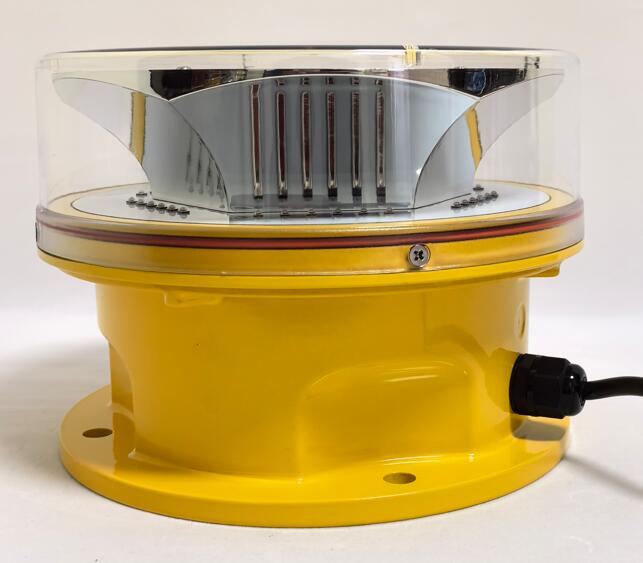FAA Tower Lighting: Engineering the Visual Safeguards of National Airspace
The Federal Aviation Administration's comprehensive framework for tower lighting represents one of aviation's most meticulously engineered safety systems, transforming static structures into dynamically visible elements within the national airspace. These specialized lighting systems serve as critical visual aids that prevent collisions between aircraft and ground-based structures while facilitating safe navigation through increasingly complex airspace environments. The technical sophistication and regulatory precision underlying FAA tower lighting specifications demonstrate how visual communication systems can enhance safety in three-dimensional operational domains.
FAA tower lighting requirements are categorized through a risk-based approach that considers structure height, location relative to airport operations, and potential impact on air navigation. The administration's technical standards specify lighting configurations for structures ranging from communication towers and wind turbines to buildings and bridges, with requirements escalating based on height and proximity to flight paths. This tiered approach ensures appropriate visibility warning levels while minimizing unnecessary visual pollution in residential areas.
The technical specifications for FAA tower lighting encompass multiple lighting types that function in coordinated layers. Red obstruction lights typically serve as the primary warning system for structures between 200 and 500 feet above ground level, providing medium-intensity flashing signals that remain effective under most weather conditions. For taller structures or those located near airports, high-intensity white strobe lights provide enhanced visibility during daylight hours, creating a comprehensive warning system that adapts to changing environmental conditions. The specific combination and configuration of these lights are determined through aeronautical studies that evaluate each structure's potential impact on air navigation.

Installation requirements for FAA tower lighting systems demonstrate exceptional engineering rigor. Lighting units must be positioned to provide 360-degree visibility with specific vertical spacing that ensures continuous definition of the structure's outline. Mounting hardware must withstand wind loads, ice accumulation, and temperature extremes while maintaining precise alignment of light distribution patterns. The systems incorporate redundancy through multiple power sources, backup lighting units, and automatic transfer switches that ensure continuous operation during primary system failures. These design requirements transform tower lighting from simple illumination into robust safety systems that operate reliably in demanding environmental conditions.
Modern FAA tower lighting systems have evolved from simple incandescent fixtures to intelligent networked solutions. Light-emitting diode (LED) technology has revolutionized tower lighting through enhanced reliability, reduced power consumption, and improved visibility characteristics. Contemporary systems incorporate precision optics that shape light distribution to maximize visibility for pilots while minimizing ground-level light pollution. These advanced fixtures maintain consistent photometric performance across temperature extremes and include self-diagnostic capabilities that alert maintenance personnel to performance degradation before complete failure occurs.
Control and monitoring systems represent another area of significant advancement in FAA tower lighting. Modern installations typically incorporate networked control systems that enable remote monitoring, configuration, and maintenance of lighting systems. These systems provide real-time status updates on individual fixtures, power supplies, and communication links, allowing maintenance teams to address issues before they compromise safety. Advanced systems include automated testing capabilities that verify system performance according to FAA requirements and generate compliance documentation without requiring physical inspection.
| faa tower lighting |
The human factors research underlying FAA tower lighting specifications reflects decades of study into pilot visual perception and recognition. Lighting intensities are calibrated to provide adequate warning without creating glare that could compromise night vision. Flash characteristics are engineered to attract attention while maintaining distinction from other aviation lighting systems. The specific red and white color specifications are optimized for maximum visibility through atmospheric haze and against various background lighting conditions. This scientific approach ensures that tower lighting provides effective warning while integrating seamlessly with other elements of the aviation visual environment.
Environmental considerations have become increasingly important in FAA tower lighting design. Modern systems incorporate shielding designs that minimize light pollution affecting astronomical observations and wildlife behavior patterns. The reduced energy consumption of LED technology contributes to lower carbon footprints compared to traditional lighting systems. These environmental improvements have facilitated installations in ecologically sensitive areas while maintaining the highest levels of aviation safety.
Certification requirements for FAA tower lighting components involve rigorous testing that simulates years of operation under extreme conditions. Manufacturers must demonstrate compliance through independent laboratory testing covering photometric performance, environmental durability, and electrical safety. The administration maintains detailed qualification procedures that ensure only compliant products enter the aviation safety system, with ongoing surveillance of manufacturing processes to maintain quality standards.
Future developments in FAA tower lighting technology focus on enhanced integration with other safety systems and adaptive capabilities. Research continues into systems that could automatically adjust intensity based on real-time visibility conditions or air traffic density. The potential integration with unmanned aircraft system traffic management presents opportunities for dynamic lighting control that responds to specific operational needs. These advancements will further enhance the effectiveness of tower lighting while maintaining the rigorous safety standards that characterize the FAA's approach to aviation safety.
FAA tower lighting represents a sophisticated safety system that balances technical precision with practical operational requirements. Through continuous refinement of standards and technology, these lighting systems have evolved into highly reliable components of the national airspace protection infrastructure. The ongoing development of FAA tower lighting technology demonstrates the aviation community's commitment to maintaining the highest levels of safety while adapting to changing operational environments and technological capabilities.
